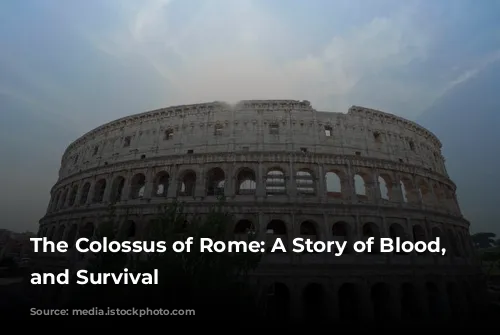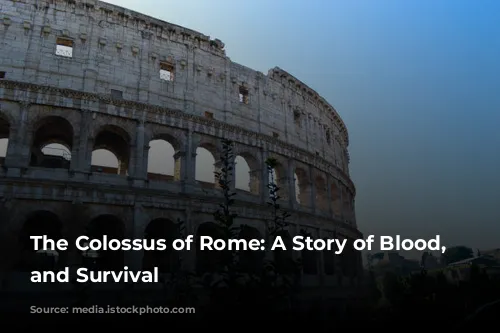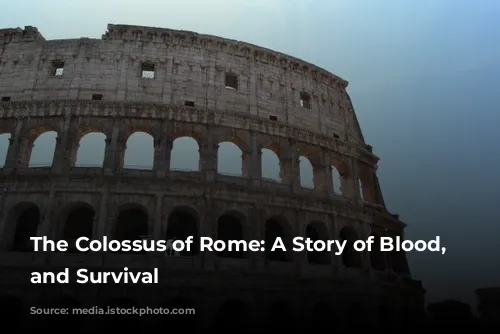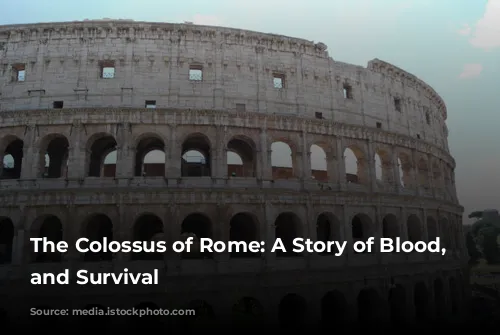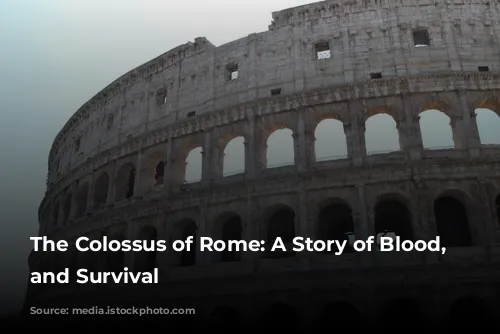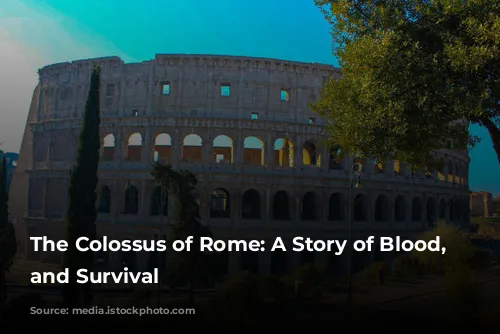The Flavian Amphitheatre, better known as the Colosseum, stands as a testament to the grandeur and power of the Roman Empire. This colossal structure, the largest in the Roman world, was commissioned by Emperor Vespasian of the Flavia family and inaugurated by his son Titus in 80 AD.
A Century of Spectacle: From Naumachiae to Gladiatorial Combat
The Colosseum’s opening ceremony was a spectacle unlike any other, lasting an astounding one hundred days. The Roman people were treated to a dizzying array of gladiatorial combats, animal hunts, and grand theatrical performances. Historians recount that over 5,000 animals were slaughtered during this lavish event.
One of the most breathtaking displays was the naumachia, a simulated sea battle. The arena floor was flooded with water, creating a stage for epic naval clashes that recreated famous battles of the past.
The Colosseum: A Monument to Roman Ingenuity
But why is this monumental arena known as the Colosseum? The name first appears in a medieval prophecy by the Venerable Bede, who declared, “Rome will exist as long as the Colosseum does; when the Colosseum falls so will Rome; when Rome falls so will the world.” This prophecy likely stems from the Colossus of Nero, a massive statue of the emperor that stood next to the amphitheatre. This colossal statue, now destroyed, is thought to have given the arena its name.
The Colosseum is a marvel of engineering and architecture. Imagine this vast structure, originally covered in gleaming white travertine stone, its elliptical shape designed to accommodate a massive crowd.
A Masterpiece of Roman Engineering
The Colosseum’s construction was a testament to Roman engineering expertise. This magnificent structure, completed in just ten years, was built using the arch, a technique the Romans mastered. Arches allowed them to distribute the weight of massive structures effectively, a principle seen in other Roman architectural masterpieces such as aqueducts.
Think of the Colosseum as a series of aqueducts stacked upon each other, each arch contributing to the structure’s incredible stability.
The Colosseum: From Glory to Ruin, and Rebirth
Today, we see only a skeleton of the Colosseum’s former glory. Over time, the structure was stripped of its marble and stone, used to build other famous landmarks like Barberini Palace, Piazza Venezia, and even St. Peter’s Basilica. The holes still visible in many columns are remnants of this plundering, the marks of the extraction of lead and iron used to secure the marble blocks.
A Seat for Every Citizen
The Colosseum could hold up to 70,000 spectators. Seating was carefully arranged to ensure clear views for every patron, reflecting the social hierarchy of Roman society. The upper tiers were reserved for the common people, while the seats closest to the arena were reserved for the elite, including senators, vestals, priests, and, of course, the emperor.
Protection from the Sun: The Ingenious Velarium
Like modern sports stadiums, the Colosseum offered its patrons protection from the sun. This was achieved with the velarium, a massive linen awning stretched across the arena using a complex system of ropes, winches, and wooden poles. It took a team of 100 sailors from the Imperial fleet to operate this elaborate structure, moving it in perfect synchrony to the beat of a drum.
The Arena: A Stage for Blood and Spectacle
Stepping into the Colosseum, the arena lies directly ahead. The original floor, once made of brick and wood, has long since disappeared. In its place, we see the cellars that housed the equipment used to prepare and execute the spectacles.
Hidden beneath the arena were lifts and hoists, their rails still visible today. These ingenious mechanisms were used to raise animals and gladiators from the depths, surprising the audience with their sudden appearance. This “special effects” technology of the ancient world was a testament to Roman ingenuity.
The Games of the Colosseum: Blood, Entertainment, and Social Control
The spectacles of the Colosseum were a blend of the symbolic and the brutal. They provided a powerful link between the citizens and their leader, offering a shared experience at important public events. These events also served as a form of social control, distracting the masses from political unrest while providing a thrilling escape from everyday life.
A Variety of Spectacles: From Animal Hunts to Gladiatorial Combat
The Colosseum’s program varied, offering a range of spectacles throughout the day. Morning events included Venationes – combats between exotic animals and men, sometimes culminating in public executions. These events were often staged with elaborate scenery, recreating forests filled with wild animals.
Gladiators: The Stars of the Arena
The Colosseum’s most popular event was the gladiatorial combat. During the midday break, the arena was cleansed of the previous day’s blood and sand was replenished. Then, to the roar of the crowd, the gladiators, heroes of the day, made their grand entrance.
The Gladiators: From Prisoners to Heroes
These gladiators, often prisoners of war, were given a choice: become slaves or fight in the arena. Their success earned them freedom, wealth, and the adoration of the masses. Some gladiators were paupers seeking fame and fortune.
The Gladiator’s Code: A Fight to the Death
Twelve different types of gladiators, each with their own distinct weapons and fighting styles, took to the arena. Retiarii, armed with nets, tridents, and knives, faced off against heavily armored gladiators armed with swords and shields. The crowd reveled in the drama and spectacle of these battles.
The Power of the Emperor: Life or Death
If a gladiator was wounded, he could plead for mercy by raising an arm. The fate of the defeated gladiator rested in the hands of the emperor, who could grant life or death with a simple gesture. A thumbs up spared the gladiator’s life, while a thumbs down sealed his fate.
The Legacy of the Colosseum: From Glory to Symbol
After the fall of the Roman Empire, the Colosseum fell into disuse, its once mighty walls becoming a refuge for hermits, hospitals, and even a cemetery. Over the centuries, the Colosseum has been a source of inspiration and fascination, drawing visitors from around the world.
Threatened with demolition by Pope Sixtus V, the Colosseum was declared a sacred monument by Pope Benedict XIV, dedicated to the Passion of Christ. A cross was placed on a pedestal, symbolizing the suffering of Christian martyrs. This cross remains today, marking the starting point of the Stations of the Cross on Good Friday.
The Colosseum: A Timeless Symbol
For the modern tourist, the Colosseum stands as a tangible reminder of the grandeur and power of the Roman Empire. It is a place where the echoes of the past still resonate, inviting visitors to experience the ghosts of old Rome. The Colosseum is not just a monument, it is a living, breathing symbol of the enduring power of human ambition, creativity, and resilience.
